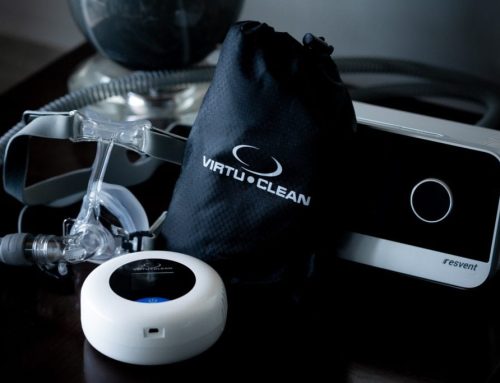CPAP is an acronym that stands for Continuous Positive Airway Pressure. CPAP therapy using a CPAP machine is considered to be the best option in treating obstructive sleep apnea.
How CPAP Machines Work
CPAP machines increase air pressure in the patient’s throat so that their airways do not collapse. Even though CPAP therapy does not cure sleep apnea, people who take this treatment experience a significant reduction of sleep apnea’s symptoms. When left untreated sleep apnea interferes with the patient’s daily life.

Just like most treatments require commitment from the patient, CPAP therapy is no different. Patients are expected to give it the therapy their best shot in order to ensure that the CPAP therapy works like it is supposed to and that they have a positive experience.
One thing that is required of all patients, is that they need to keep their CPAP equipment clean. Using a dirty CPAP machine can make for an unpleasant experience for sleep apnea patients.
Common signs of a dirty CPAP machine include:
Frequently Getting Sick
Germs, harmful bacteria as well as mold have all been found to thrive in dirty CPAP equipment. These harmful antigens cause a variety of illnesses in patients in addition to their sleep apnea.
Some of the illnesses that are come about due to a dirty CPAP machine include:
- Respiratory Infection
- Runny nose
- Skin irritation
- Sneezing
- Sore throat
- Airway/lung irritation
- Congestion
If you’re experiencing any of these symptoms, you need to find out why they are happening and what you need to ensure that it does not get worse.
Below are some simple solutions to the above mentioned problems:
CPAP Mask does not fit
If your CPAP mask is too big or too small, it might be the cause of the irritation you’re feeling and not necessarily a dirty CPAP machine. If this is the case, you should consult your doctor to find what mask styles, shapes, and sizes are available for you.
Not Cleaning Your Mask Well Enough
Even though the CPAP machine itself is usually clean, it picks up viruses and bacteria from the air inside your home or even your face, which in turn increases chances of you falling sick. There are a couple of ways to clean your CPAP machine, these include hand washing the CPAP machine and its accessories, using CPAP wipes, chemical cleaning, or using a CPAP cleaner such as VirtuCLEAN.
All of the above mentioned methods are effective, however, if you want to get rid of as much as 99.9% bacteria, using VirtuCLEAN is the best option for you.
Use A Heating Humidifier
Another reason why you might be experiencing the symptoms mentioned above include lack of a heated humidifier. It is quite common to suffer from a sore throat when undergoing CPAP therapy. This is brought about by the air that is passing through which has the tendency to dry out the airway.
One way of eliminating this particular symptom, is for the patient to use a heated humidifier with their mask, that way they enhance the comfort levels.
Moisture Accumulation in the Tubing and Mask
It is normal for some moisture to be found in your CPAP machine especially if you are using a heated humidifier with your CPAP mask. Unfortunately, when there is excessive moisture in your CPAP machine, it creates a conducive environment for the growth of viruses, bacteria, and mold. Keeping this in mind, you should always strive to keep your CPAP machine and its accessories bone-dry when it is not in use.
Also, when you hand wash the CPAP mask with soap water, you should allow it to dry thoroughly.
Notice A Nasty Smell
If you notice that your CPAP machine is giving off a nasty smell, that is, smells like mildew, you should immediately have it cleaned. The mildew scent signals that their might be mold present inside your equipment.
The interior part of a CPAP machine tends to be damp and warm, both of which create the perfect breeding ground for mold.
If this is the case, pull off the tubing from the CPAP mask and machine, and clean the tubing in the kitchen sink using a solution of white vinegar and water. The solution should have 1 part white vinegar and three parts water.
Next, take a dishcloth and dip it into the vinegar and water solution and use it to wipe down the CPAP’s mask interior as well as pillows.
Finally, if your unit comes with a humidifier, empty the water in the humidifier chamber and fill it instead with the vinegar and water solution. Let the solution sit for about 30 minutes, then wipe the chamber’s interior with a dry towel.
Ensure that all the moisture in the CPAP components has dried out before attaching them to the CPAP machine.


 Shop
Shop



